The Manic Pixie Dream Girl: Manipulative or Unrealistic?
A good romance fiction is not just about two characters falling in love. The relationship should contribute to the positive development of at least one of the characters. Ideally, this positive development improves everyone involved, but sometimes a story only shows one of them evolving. The other character may seem to only exist to make this protagonist a better person. When it’s a woman making a man better, it is often offensive to proponents of female empowerment. They cry that it objectifies women, turning them into commodities for enhancing men’s lives.
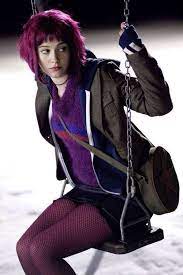
A certain kind of character embodies this trend: the Manic Pixie Dream Girl. Some of the most fascinating examples of this trope are self-aware. They recognize that they are being treated as a Manic Pixie Dream Girl, and they try their best to avoid becoming a cliche, mostly by telling the men in their lives to stop being sexist. Other times, writers try to deconstruct the Manic Pixie Dream Girl trope by making a character who checks most of the boxes but then diverts from expectations.
Analyzing examples of Manic Pixie Dream Girls may help determine if they are harmless love interests, manipulative girls with loose morals, or poorly written characters created for a writer’s misogynistic agenda.
What Is a Manic Pixie Dream Girl, Anyway?
Girls fitting this archetype tend to be described as quirky and “different.” They read books instead of poring over shallow magazines. They listen to old music rather than obsessing over current trends. They pursue imaginative flights of fancy rather than focusing on “boring” realism. They defy conventional stereotypes of beauty by daring to dye their hair unnatural colors, yet they are still very beautiful, especially to the leading men of the stories they appear in.
These men, meanwhile, follow a pattern, as well. They tend to be sad, cynical, and lonely, often due to a recent breakup or similar loss. They could certainly benefit from an energetic and optimistic presence to brighten their lives, and they almost always do. Many of these men fall in love with the Manic Pixie Dream Girls (or MPDGs, for short). Even if the relationship doesn’t last, these men will be better off. But therein lies the issue.
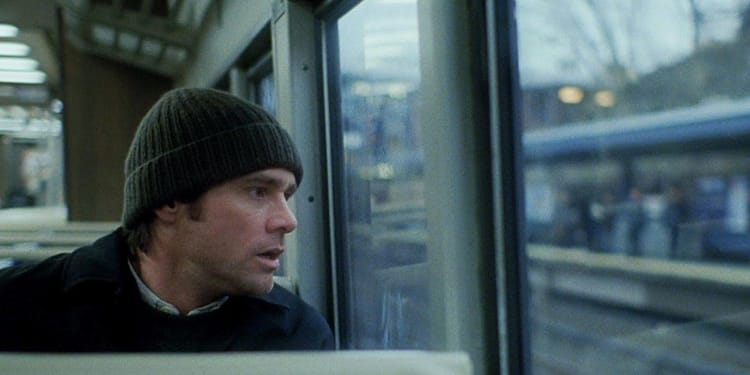
The tragedy of the Manic Pixie Dream Girl is that she is often doomed to die or otherwise disappear after improving a man’s life. When this happens, it draws attention to the fact that the MPDG wasn’t doing much with her life – at least, nothing the audience was aware of – outside of her relationships. Her tragic end is only a true loss for the men who loved her. Perhaps she lacked ambition or gumption. Perhaps she was a mere plot device rather than a well-developed character.

The term Manic Pixie Dream Girl was coined in a 2007 AV Club article. The author cites the Elizabethtown character Claire (played by Kirsten Dunst) and the Garden State character Sam (played by Natalie Portman) as examples. “The Manic Pixie Dream Girl exists solely in the fevered imaginations of sensitive writer-directors to teach broodingly soulful young men to embrace life… Audiences either want to marry her instantly… or they want to commit grievous bodily harm against [her]…”
These opposite extreme reactions represent men who fantasize about finding a Manic Pixie Dream Girl in real life and women who hate these girls for creating impossible standards. In an ironic twist, the MPDG is intentionally different from overtly feminine supermodels, but she is just as unrealistic.
Beauty is in the Eye of the Man
The Script Lab describes the Manic Pixie Dream Girl as a 21st-century version of the “damsel in distress” trope “for young men in distress who… aren’t fully capable of rescuing the damsel”. This is part of the argument that MPDGs only exist for the man’s benefit. Every part of them seems curated specifically to match the man’s desires.
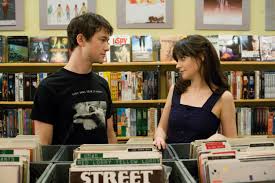
500 Days of Summer features Zooey Deschanel as Summer, one of the most well-known examples of the Manic Pixie Dream Girl. The main character, Tom, is hopelessly in love with Summer, but he fails to see her as a complex person. The audience almost exclusively sees Summer through Tom’s point of view, so audiences may also struggle to see her as more than a plot device.
From one perspective, this film is a critique of the Manic Pixie Dream Girl trope. Tom does not end up with Summer at the end of the movie. It is revealed that she does want her own path through life, and Tom is not part of that path. The problem is the audience does not see Summer having her own life because the movie focuses on Tom’s perspective.
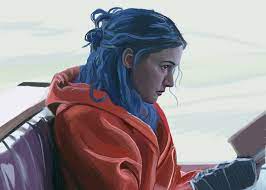
Similar problems occur with other Manic Pixie Dream Girls. Most of the plot of The Endless Sunshine of the Spotless Mind takes place literally inside the mind of Joel, the leading man, so the character of Clementine, including her attractive qualities and her flaws, is hopelessly skewed by Joel’s perceptions.
In the movie Her, a man named Theodore has a relationship with an artificial intelligence named Samantha (voiced by Scarlett Johansson). Samantha doesn’t even have a body, and she almost never speaks to anyone other than Theodore onscreen. Everything about her character seems curated to satisfy Theodore’s fantasies. At the end of the movie, however, it is revealed that as a non-human entity, Samantha has a much deeper life than Theodore could possibly imagine. And yet, the audience never sees that life.

These are examples of the storytelling principle, “Showing is better than telling.” Simply telling the audience that the Manic Pixie Dream Girl has more going on in her life than her relationships does not equate to character development. If all we are shown is her impact on men, the argument that she is a mere plot device in men’s stories seems accurate.
Tragic Loss by Death or Breakup
A major reason the Manic Pixie Dream Girl is considered nothing but a plot device in men’s stories is the fact that, once she has improved a man’s life, she is usually killed off. Even this tragedy is seen as just another event in the man’s character development. It is a form of “fridging,” the popular but maligned trend of female characters being killed off to motivate male heroes.
One of the earliest examples of this is in Ray Bradbury’s Fahrenheit 451. In a post-literacy dystopia, Clarisse McClellan is one of the last remaining people who dares to be curious and free-thinking. She appears in the life of Montag, the book’s protagonist, and makes him realize how miserable his life really is. She motivates him to pursue change. And then she’s hit by a car and dies.
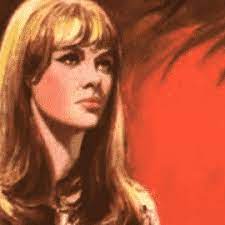
This is tragic not only because a girl is dead but also because it suggests she was only useful for motivating a man, not for any purpose of her own. It risks teaching readers that girls and women in the real world also lack purpose apart from helping men pursue their own purposes.
Young Adult novelist John Green has written multiple books about Manic Pixie Dream Girls (as well as Augustus Waters, who could be called a Manic Pixie Dream Guy). Green has claimed he tries to deconstruct the trope, show how harmful it can be, and promote a healthier perception of women, love interests, and people in general. However, his stories fall prey to pitfalls very similar to other MPDG stories.
John Green’s Looking for Alaska follows main character Miles as he meets and falls in love with the beautiful, well-read, and rebellious Alaska Young. In an early climax, Alaska’s impulsive nature leads to her dying in a car crash. For the rest of the book, Miles tries to learn the truth of what happened to Alaska, which requires him learning details about her that he either missed or ignored before. The book’s true climax is Miles realizing that his perception of Alaska was flawed.
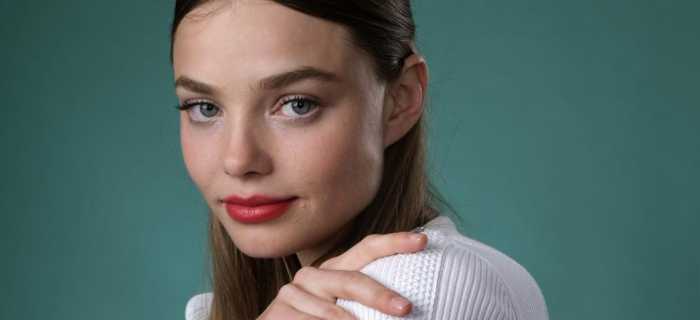
Alaska Young’s death is not exactly “fridging,” but it means that her depth of character can only be told to the audience, not shown. A similar problem occurs with Green’s Paper Towns. The main man, Q, has a crush on Manic Pixie Dream Girl Margo Roth Spiegelman. Margo mysteriously disappears, and Q spends the novel trying to find her.
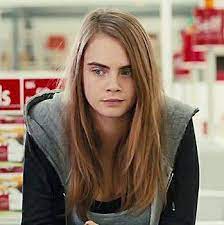
As with Miles and Alaska, Q struggles to see Margo as a real person. He sees her as a mystery to be solved, and assumes her disappearance is a quest for him to complete, like a fairy tale hero pursuing a princess. In reality, Margo ran away because she felt misunderstood by people like Q. The book ends shortly after Margo explains her deep inner life. Once again, readers never see Margo outside of Q’s perspective, so the argument that she is more than a Manic Pixie Dream Girl lacks concrete evidence.
These stories do achieve John Green’s goal of showing readers how harmful the Manic Pixie Dream Girl stereotype can be. But these girls are still Manic Pixie Dream Girls. They may have depth of character, but young female readers do not get to see it. Thus, these female characters are not good role models for female audiences.
The Cure for MPDG Syndrome
The critic who coined the term Manic Pixie Dream Girl later regretted it because the term is sometimes applied to female characters who do not deserve it. There are many female characters that are quirky and fun but still well-written and not just plot devices in men’s stories. Some of these women may seem like Manic Pixie Dream Girls at first, but then they break out of the stereotype.

The TV show New Girl is one story that defies stereotypes. The main character, Jess (another Zooey Deschanel performance), seems to fit the Manic Pixie Dream Girl formula, but unlike most MPDGs, Jess is the main character of her show. She is allowed to display depth of character while also filling the role of “ray of sunshine in men’s lives.” Jess is one of the few exceptions that proves the rule. If some other MPDGs were given the same amount of attention from writers and audiences as Jess, they would have opportunities to be better characters.
The movie Juno is about a teenage girl named Juno who has become pregnant and plans to let a married couple adopt her baby. The husband of the couple, Mark, develops an infatuation with her because he finds her more interesting than his wife – he and Juno have similar taste in music, for example, despite their generational gap. From Mark’s perspective, Juno is a Manic Pixie Dream Girl, but the audience sees the whole story from Juno’s perspective.
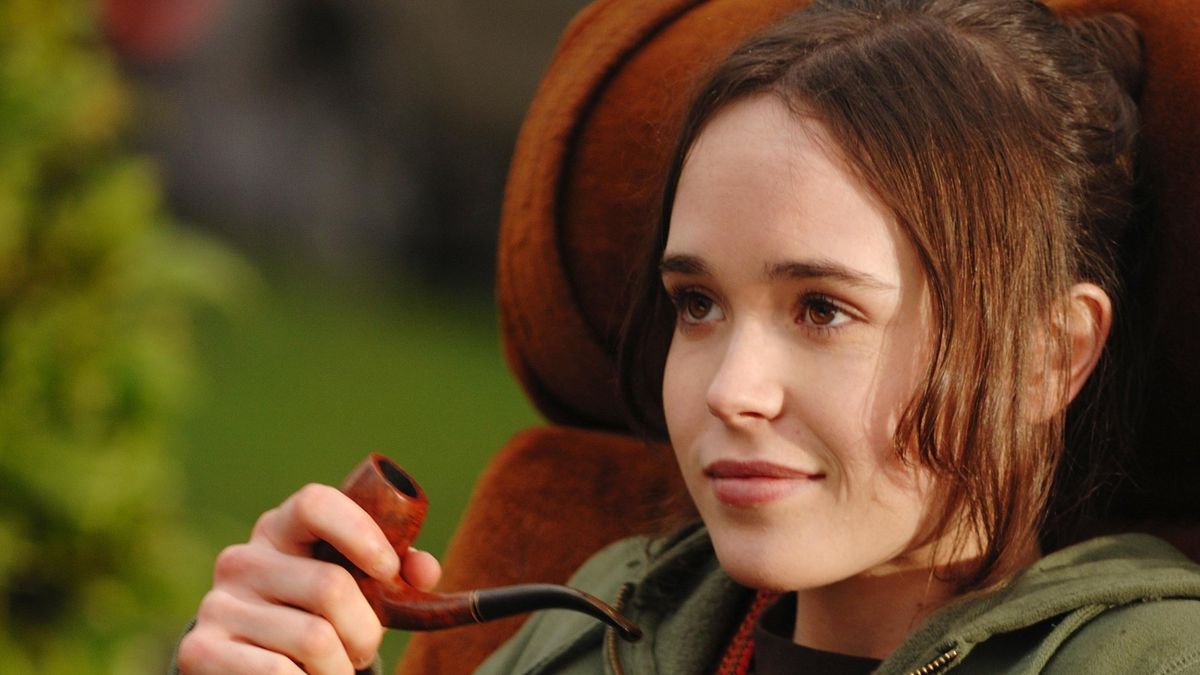
Juno’s “quirks” are largely a result of her simply being a teenager and wanting to live a fun, unfiltered life. Her unplanned pregnancy seems to be the first thing to challenge this lifestyle. In other stories, facing such a “consequence” would be a dramatic twist; in this movie, it’s the premise. This perspective shift is what makes Juno less of a Manic Pixie Dream Girl.
The Sound of Music is a classic story of a fun, cheery woman improving a grumpy man’s life. Again, the movie/play focuses on the perspective of the woman, Maria. Audiences see her struggling. Her free-spirited nature contrasts with her desire to be a nun, and her impact on Captain von Trapp and his family is outside of her job description. But in the end, she finds new purpose in helping them.
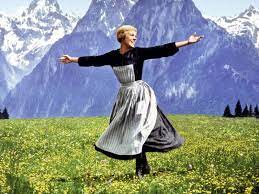
Once again, Maria could have been seen as a Manic Pixie Dream Girl if the story had focused on Captain von Trapp’s perspective. But when the perspective shifts, audiences barely register her as an example of the trope. The same could be said of Juno and various other female characters who get to be the main characters of their stories.
When we see these stories from the girl’s perspectives, it is easy to see that they are not trying to manipulate the men who inevitably fall in love with them. This makes it easier to understand and appreciate the perspectives of Manic Pixie Dream Girls who are not given as much depth.
Manic Pixie Dream Girls are a shortcut for authors to make a female character easy for a male protagonist to fall in love with. It’s easy to think less of a story for relying on a shortcut. The more familiar we are with well-written characters, the harder it is to enjoy characters who lack depth.
On the other hand, MPDGs have some good perspectives on life. They value imagination and optimism over superficial realism. This can be useful in helping the men in their lives and even encouraging the audience. Manic Pixie Dream Girls do not need to be eliminated altogether.
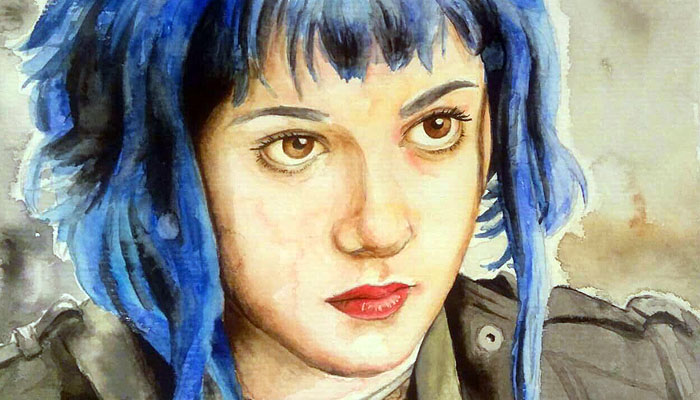
Also, Scott Pilgrim vs the World, a comic/movie featuring famous MPDG Ramona Flowers, will soon be getting an animated adaptation. Whether it showcases Ramona’s depth or not, it suggests Manic Pixie Dream Girls and their stories are here to stay.
As John Green’s protagonists have learned, the best thing we can do with Manic Pixie Dream Girls is trying to understand them as real people and see their perspectives, ideally before they die or disappear. Writers can do this by writing the woman’s perspective. Readers can do this by practicing empathy. Of course, the same lesson applies to anyone, boy or girl, love interest or platonic friend, dream or reality.
What do you think? Leave a comment.











I just loved reading this. First time I see female characters being seen from this perspective and I thought it was fantastic!
As an ex-Hollywood writer, allow me to observe that some unseen factors cause these character tropes to live on long after they’ve spoiled in the intellectual property fridge.
First, there are no new character types. The original MPDG might appear to be Kate Hepburn’s character in ‘Bringing Up Baby’ — until you look at silent film, where every other female role is precisely this character. Then the Manic Pixie Dream Girl submerges for a while, cropping up now and then (‘Gun Crazy’, ‘Breakfast at Tiffany’s’, ‘Something Wild’, et al) until there was a rash of ’em in the oughts. The movie business is a recycling center, not a place for new products. I say this with love.
Second, remember it can take ten years for something to get made. So the first thing to get picked up and made is described as the first of its kind (‘Pieces of April’ etc.), but all the derivative ones? They were probably written at nearly the same time. And all of them were based on something earlier.
The weird thing for me about the MPDG is how little the role has changed in 100 years. Nutty free-spirited girl turns around the life of square guy, goes away (or is captured, if the studio insists), fade to black. I think what’s changed here is we now have, for better or worse, a pithy way to describe this character.
As female empowerment increases, proponents of female empowerment care more about how women are represented in the movies. The fact that this trend has existed in some form for a long time just raises the question of whether it should still exist or how much it should have changed in recent decades.
Given how few women’s voices there were (and still are) in Hollywood, I’m not surprised at all that the role hasn’t changed much. I think one of the more disturbing and lesser discussed aspects of the MPDG is how young they skew, both emotionally and literally, in relation to male protagonists: teen Juno (Elliot Page) and 30-something Mark (Jason Bateman) in Juno or 13yo Marty (Natalie Portman) and 30-something Willie (Timothy Hutton).
You know, now that you mention it, I think many of Harold Lloyd’s silent movies can be considered to have MPDGs.
I remember MPDGs being all over the news a few years ago!
To me there are two qualifiers for the MPDG:
1) Existing to complete/save the male lead
2) The manic pixie personality.
Any character who doesn’t tick off both is not an MPDG to me. 1 is a recurring issue with female characters that exists outside of this trope too, and you can write a quirky/eccentric female who is rounded and not there simply to make a male whole.
Indeed. Examples of girls who don’t quite fit the stereotype include Jess from New Girl, Juno, and Maria from the Sound of Music. The cure seems to be focusing on the woman’s perspective, so audiences can see more depth than just saving the male lead.
Elizabethtown remains the only film i have walked out of. So dull.
Seeking a Friend for the End of the World is that rare beast, a film written and directed by a woman, so why did Lorene Scafaria chose to create a MPDG and pair her off with a boring middle-aged insurance salesman, very convincingly played by Steve Carell? Why didn’t she create a manic pixie dream boy?
How dare women be cute and feminine and free spirits.
The problem isn’t women being any of those things; the world would be some pile of shite if they weren’t. It’s the manner of cinema’s portrayal of an awful lot of female “characters” with such traits, the insistence that such women are nothing but those traits and that their only function is to fulfil the male character, who is inevitably a lame douchebag who somehow “deserves” such fulfilment.
Women are way, waaaaay more complex than that, and it would be nice if that dawned on purveyors hipster-fodder indie-splurt movies.
I submit another Portman character: Marty from Beautiful Girls.
I guess it’s more her youth that makes her quirky and awkward in that film.
Mary Elizabeth Winstead as Ramona Flowers in Scott Pilgrim vs. The World is too spiky and sane, not manic enough. More like Moody Pixie Dream Girl.
I completely disagree with this kind of conclusion — and it is kind of insulting> “This can be useful in helping the men in their lives and even encouraging the audience. Manic Pixie Dream Girls do not need to be eliminated altogether.” We, women, are not here to teach men or other people anything, we have our lives, our problems, our… a lot of stuff. We do not need to be “useful”, and MPDGs are representative of women as useful, so, no, thank you. They can go away.
Most fictional characters exist to entertain real people and, even better, teach lessons to real people. Superheroes can encourage selflessness; most villains present examples of what not to do; and characters with optimistic personalities can help real people see the benefits of positivity. Characters who seem shallow and two-dimensional at first can help audiences learn empathy as we make an effort to see their character depth.
But don’t worry: in real life, you can be completely different from Manic Pixie Dream Girls. Focus on your own problems and never be helpful to men with anything, if that’s what you want. (Just kidding, obviously.)
I maintain what I said before. No need for female characters to exist solely to be useful and teach men anything. This spreads and reinforces sexism in real life. Not kidding at all.
And yet again, people Do “learn” from fiction… and the manic pixie dream girl trope teaches us that men will always be the primary protagonist of every story, thus only ever leaving supporting roles for women to fill. Thanks, but no, thanks, it can go away, rather sooner than later.
Women may not need to be useful but characters in stories do.
I won’t elaborate any further, have written a lot above and below about why this representation of women is bad. No need for female characters to be “useful”, and neither women irl. ‘nough said.
Talking about “positivity” now… It is good we have now more anime, for instance, that are considered dark. Since positivity itself can be very toxic. We need balanced and nuanced characters and stories in fiction, for life is not reduced to extremes either.
“In fact, manic pixie dream girl can be considered a verb — in that one can be manic pixie dream girl-ed. You can see this in your own relationships and friendships. How many of your female friends have had relationships with men, romantic or platonic, in which they really only function to help that man “grow up.” And once he does grow up (with her help, of course) the story is over; no one cares about her resolution.”
The ‘manic pixie dream girl’ is rooted in misogyny> https://dailycampus.com/2022/02/25/the-manic-pixie-dream-girl-is-rooted-in-misogyny/
What about the old-timers. Manic Pixie Dream Women/Grannies. Do we have any examples?
sinonMaggie Smith in ‘The Lady in the Van’? Judi Dench as ‘M’? Helen Mirren? Even Meryl Streep?
It’s not just any character that’s old. It’s characters whose sole purpose is to enlighten the lead character through being annoying and have no depth of their own.
I’ll watch Judy Dench, Maggie Smith and Lily Tomlin in anything… Had Madeleine Khan survived, she’d be on that list too. I don’t know what the abbreviations are all about but don’t much care either as long as writers keep using the age of a character as vehicle to say stuff that the young(er) folk so desperately need to hear.
Less aging lotharios, or hitmen/spies forced out of retirement – more barmy old broads who are sick of their kids and just about tolerate their grand-kids. Or, shock horror, spinsters who *gulp* aren’t secret lesbians or sexually frustrated…
Katherine Hepburn in “Bringing up Baby” surely a contender
Imagine a nursing home full of this trope.
Three words: HAROLD AND MAUDE.
I HATED 500 days of summer! I can see why JGL’s character would have been interested in Deschanel’s character initially, based on looks, but as soon as he discovered what an enormously self absorbed and annoying cow she was, he’d have run a mile. After 500 days he’d have throttled her.
It’s Garden State that I loathe from the mention above. I don’t know why, it just irritated the hell out of me. Zach Braff – ugh. I should have expected it to be awful having seen a couple of “Scrubs”.
Actually, it’s JGL character who is the ahole here. Just because Zooey likes the Smiths he decides he’s in love with her and tries to fit her into his idolised mould of a perfect woman. She makes it clear that she doesn’t want a relationship, or a serious romantic on at least, but he still acts outraged when she’s not interested.
Yep, hated JGL’s character as well. Hating one lead character doesn’t mean you automatically have to like the other. They were both as loathesome as each other in my view. I picked her out because the piece was about female characters and referenced her specifically, and also because it was JGL who went after her, something I just couldn’t believe – as much of a twat as he was.
The whole point of the movie is to attack the very notion of a Manic Pixie Dream Girl.
Something also done excellently in Eternal Sunshine of the Spotless Mind; “I’m not a concept. Too many guys think I’m a concept or I complete them or I’m going to make them alive, but I’m just a fucked up girl who is looking for my own peace of mind. Don’t assign me yours.”
One of the good things about almost great Ruby Sparks was its attempted take down of the MPDG archetype.
Ruby Sparks was a really lovely film, and yes i know the term lovely is not really appropriate to this context, however I cant really think of a better way of describing it.
I still want one!
This is the problem I have with MPDGs. You say “I want one” like they’re inanimate objects like an iPhone or something because they have a child-like persona and men won’t find them a challenge. Creepy.
She’s free spirited, delightful, sensitive, caring and she’s plays the female lead who changes one young man’s life forever. The lovely sunbeam that is Penny Lane!
While I didn’t love Almost Famous, I don’t think Penny Lane is an MPDG. She IS about the male teenage lead’s character development, in that its part of his growing up to realise she is not just a romantic ideal, but a real person with troubles of her own that he is actually a bit too young and inexperienced to have understood – ie that she has a life, goals and agency of her own that have nothing to do with him.
Also, he’s actually the pixie for her – he is the one who is starry-eyed and innocent about the rock and roll world, and she’s been enjoying seeing it through his eyes while shielding him from the seediness with bowdlerised stories.
I hate terms like this, it’s the same as hipster, they get branded around and then used for perfectly decent films and female characters. It wouldn’t be to bad but they are often used in a negative way. Is it a big surprise that guys like cool, pretty women who are in to obscure bands?
I have no problem with the term but it really does come down to the girl who prominently provides a vehicle for the male protagonist’s character development. It’s fine but problematic because people give it parameters such as must be in a romantic movie, must be on the screen for a long time, must be culturally hip etc etc. That makes it slightly redundant because it makes it esoteric to factors that aren’t that important.
You could equally say somebody like Bill from Kill Bill 2 is a Magic Pixie Dream Boy if it’s just the opposite gender as a vehicle for character change. The Bride’s transformation when they meet towards the end of the film is quicker and didn’t base the whole movie around it but it achieves the same thing.
I think the 500 Days of Summer mention is a bit unfair, if ony because my understanding of the film was that it was largely about the male character’s own self-absorption and how he projects all this stuff onto Summer and ends up being crushed when she turns out not to be the attractive, winsome answer to all of his problems. I remember it as a more of a film about the idea of the ‘Manic Pixie Dream Girl’ rather than a film featuring a ‘Manic Pixie Dream Girl’. They get together and he decides that she is the perfect woman and the answer to all his problems, and then becomes disillusioned when she turns out to be more complex than that.
My recollection is that his character is a bit of a fantasist and an idiot. I liked the film!
Exactly! She wasn’t ‘bubbly’ at all. Since New Girl started I find an awful lot of Deschanel’s roles being lumped in with it. Lazy.
From earlier generations:
– Melanie Griffith in “Something Wild”
– One or more of the actresses in “After Hours”
Still debating who might have been the 1930s MPDG, but Carole Lombard comes to mind.
I prefer this 80s incarnation.
Much more dangerous and seemed to relish placing their men in genuine mortal danger.
Is Madonna in Desperately Seeking Susan a proto-MPDG?
In the 30s you could argue that Hepburn in Bringing Up Baby kinda fits the mould. As does Streisand in What’s Up Doc? in the 70s…
What about the demise of Ellen Page’s character in Super? Nicely varies the MPDG trope.
Super was great.
Was I the only one who wanted Orlando Bloom’s response at the end of Elizabethtown to be something along the lines of…
“How long did you spend planning this?! Get a life you weirdo!”
It’s not surprising that MPDGs are so popular: they are a socially awkward, mildly Aspie, 20-30 something guy’s absolute dream, especially if they’re bright.
What about Along Came Polly. That one seems to me the ultimate in this genre, for its sheer fakeness. Hey, it’s another Jennifer Aniston rom com, but this time let’s make it quirky and bohemian, we’ll give her a *pet ferret*. That’ll make it different from all those other films she was in….
I’ve known my fair share of Manic Pixie Dream Girls in real life. Of course, in those cases they were Manic Pixie Real Life Girls. I suspect, and have always suspected, that ordinary non Manic Pixie Girls turn into the Manic variety depending on the guy they meet and, for some reason, I’m that guy. When they relate to anybody else they suddenly turn into something quite different.
There are so many stereotype characters in films that are never even identified, from wise beyond their years little kids to touch older characters with a soft centre. I never understood why the quirky indie girl or MPDG got such a bad rep.
I’d like more films that had female love interest characters that didn’t make me wish I wasn’t female (or at least wasn’t watching). More like her out Sightseers, for instance.
My favourite antithesis to the MPDG has to be Christina Ricci in Buffalo 66. All awkward, vulnerable ugly/beautiful ducklingness.
The thing is, I have to admit that the whole MPDG thing was (and is) very, very attractive to many men, myself included. It’s the whole “hot girl is in to the same stupid bullshit as you” thing.
It’s pretty much summed up in one scene in 500 days of Summer, he’s standing in the lift listening to The Smiths, gorgeous woman tells him that she loves them and starts singing one of their songs, his response? “Holy Shit”. It’s music nerd wish fulfilment.
Of course it’s twee, annoying, overplayed and a little embarrassing, but I’d be lying if I said there wasn’t something incredibly attractive about the whole thing. Plus it’s not solely a movie thing, it’s just as big a deal in real life.
Well wouldn’t we all love a girlfriend who’s crazy and interesting but ultimately exists only to please us? I didn’t like 500 Days of Summer very much, but one thing it was good at was exposing that tired cliche.
I’m not sure it’s the “exist to please us” thing. I think it’s more the whole shared interests side of it.
Case in point, I completely fell for a girl just because she said she liked the Pixies, because when you are in the school of thought that things like taste, music etc really matter then it’s a huge attraction.
I agree that 500 days isn’t technically a very good movie, but my God it got a lot of stuff spot on, there were bits in it that I found practically word for word autobiographical. And yes it did skewer it, because in the end the MPDG turned out to be anything but. But then happy endings are boring!
I’ll raise you a British-accented villan and an IRA terrorist.
I just realised I’m a GWNHOTPMPDGUN.
Guy who’s never heard of the phrase manic pixie dream girl until now.
Same here, all these years I knew something wasn’t quite right and thats it, I’m an ‘unwitting’ GWNHOTPMPDGUN.
Do we have a support group and state funding?
Pretty much anything with a MPDG is a bit of a winner with me… especially Ramona Flowers.
It became overused, and people started using it to describe basically any female supporting character.
Garden State was a thoroughly entertaining film, and Natalie Portman was great in it.
Why do all movie characters have to be representative of us? We need heroes and villains and outrageous characters to cheer and jeer, otherwise why would the movies be entertaining? In most cases we go to the movies to escape reality, not see more of it.
If movies don’t reflect reality, the tendency is for them to eventually start only reflecting other movies. The characters become archetypes rather than people, the plots become predictable, it all becomes boring lifeless pap.
Well-rounded, relatable characters can only be a good thing, whether it’s an escapist movie or not. It’s fine for a character to be outrageous, but much more interesting for her to have her own motivations and goals, rather than solely existing to help a male character work through his issues.
The Manic Pixie Dream Girl has her place on screen, alongside the preposterously muscular (and shirtless) action hero. It’s entertainment.
Zooey Deschanel: providing awkward teenage boys with false hope for over a decade.
One trope that really irritates me personally is the TV ad Dad. Basically they are all portrayed as Homer Simpson-like inept manchildren who exist only to embarrass the rest of the family. I’m not even a father myself but this portrayal is tiresome and is no better than the “women know your place” type ads from the 1950s.
Thanks for sharing the discussion, not a trope I knew much about so appreciate the clear outline with great examples – really useful!
It’s interesting how some say that if a character displaying traits of the MPDG has sufficient development, they are not a MPDG. Like this video argues, https://youtu.be/WwGjpPlgqyo because Clementine (Eternal Sunshine of the Spotless Mind) has a backstory, her own motivations and life she is not a MPDG. The question of how much development/independence is needed then is a fascinating one that doesn’t seem to have a defined answer.
I mean, there’s no Hard and Fast Rule for defining most tropes. Even the definitions of genres like comedy vs tragedy change over time. It’s all pretty subjective and open to conversation, hence articles like this and videos like the one you mentioned.
Another example of this might be Holly Golightly in Truman Capote’s ‘Breakfast at Tiffany’s’. She’s dazzling and elusive, and turns the protagonist’s world upside down—but her characterisation is filtered completely through the male gaze.